Apple Vision Pro ZEISS optical inserts
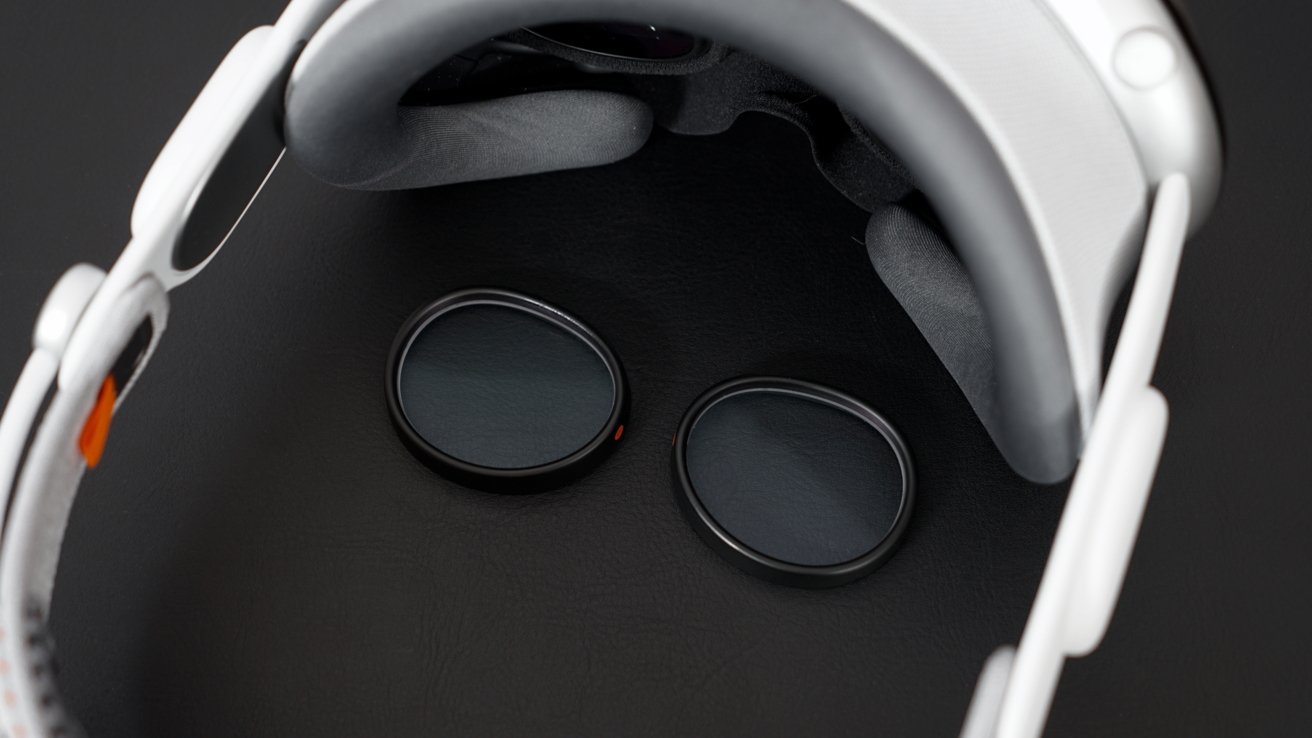
If you need glasses or contacts, there's a solid chance you'll need optical inserts to use Apple Vision Pro. Here's what you need to know about these magnetic lenses.
Apple Vision Pro is designed to fit the user's face exactly. That means you won't be able to use glasses, and because of how eye-tracking works, hard contacts aren't an option either.
You won't need optical inserts if you can see fine with single-vision soft contacts. That means everyone else, those with glasses, readers, or other forms of vision correction, will need the inserts.
Apple Vision Pro ZEISS optical inserts design
Apple isn't the only company that offers some kind of inserts for vision correction in their headset. However, some companies avoid the need by building the headset with space for glasses, like PSVR 2.
The optical inserts for Apple Vision Pro are small oblong lenses surrounded by a metal frame. One side is magnetic, so it slots exactly into the headset in the correct direction.
The top of the lens has a white line to indicate which side faces up. The outer edge facing the user's nose has an "L" or "R" to show which side it belongs in.
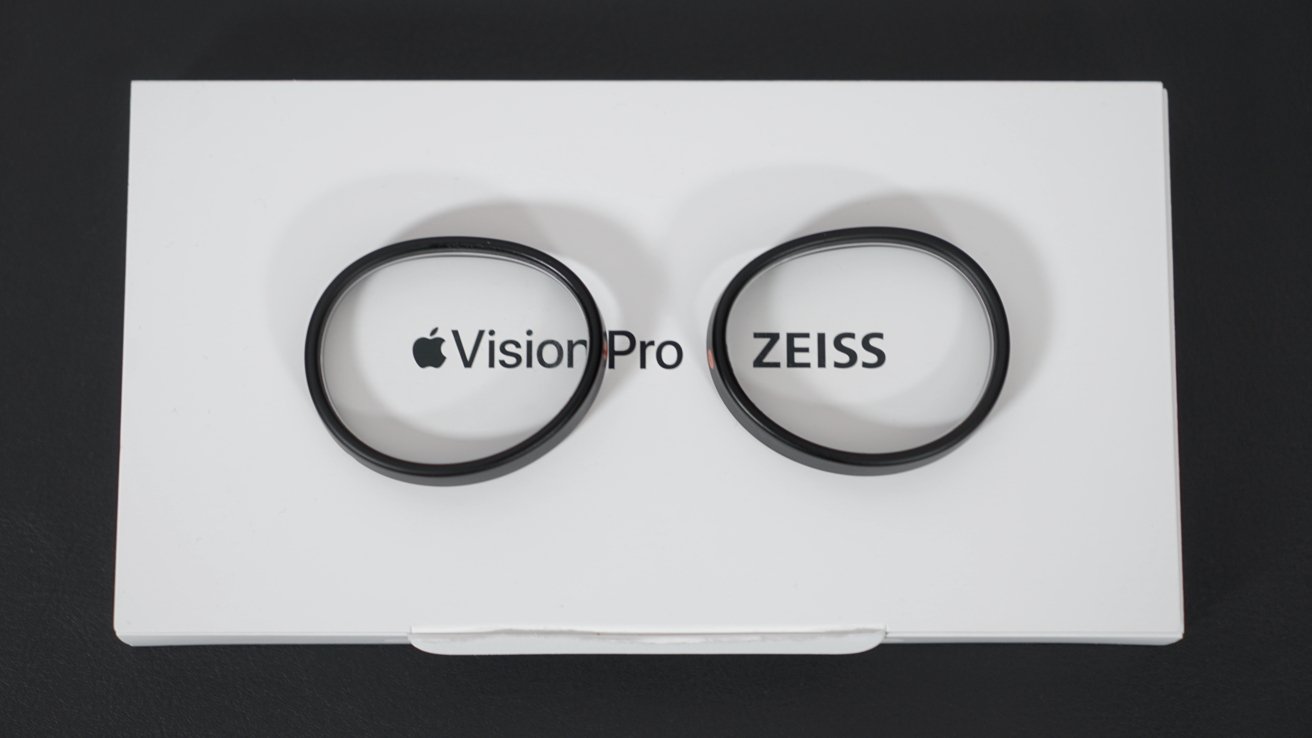
The magnetic strength of the lenses is enough that they won't pop out during use, no matter how much you move your head. After one mild drop to a thankfully carpeted surface, we've noticed that the lenses can pop out with enough force.
No, nothing was damaged in this drop, not even a scratch.
ZEISS is known for making high-quality camera lenses but has also made prescription inserts for different applications. The clarity of the glass lends to the high price.
Using Apple Vision Pro optical inserts
Depending on your prescription strength, you may find using Apple Vision Pro without inserts is possible. The focal distance is slightly over a meter, but it's not the same as seeing an object in real life.
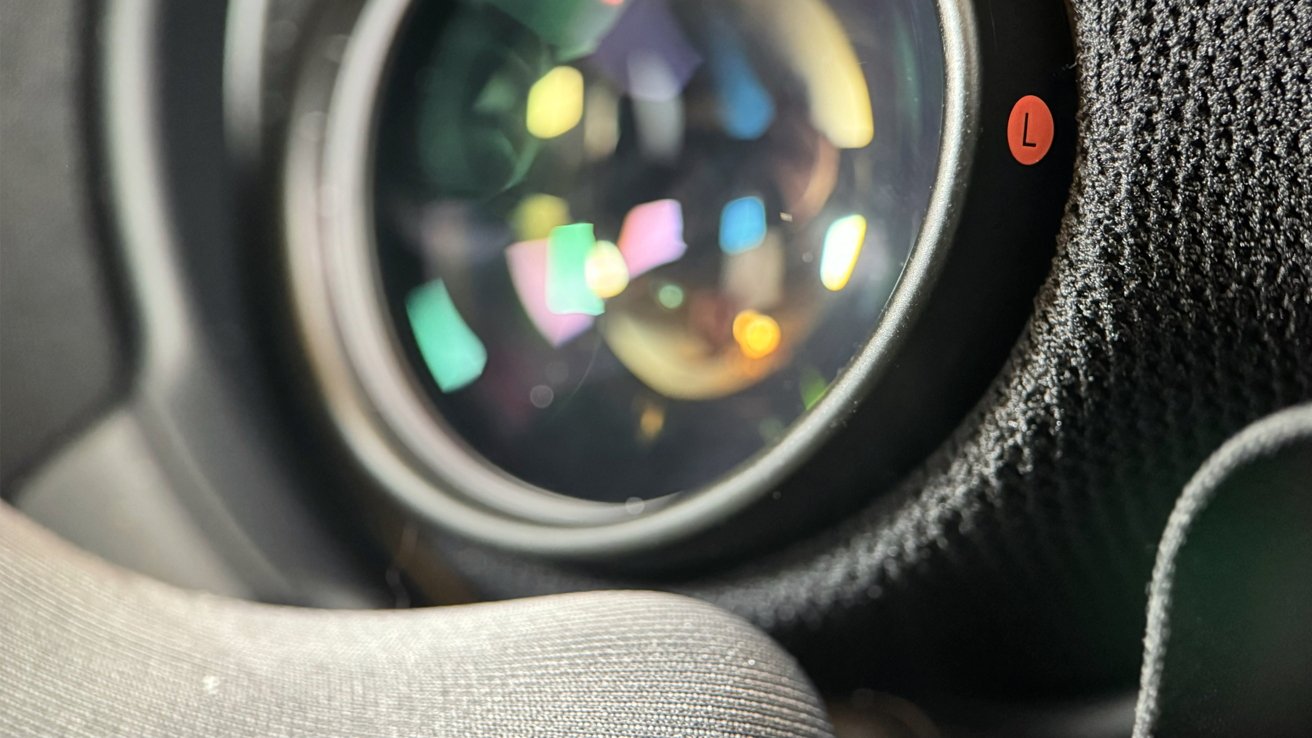
We've noticed that while things are legible without the inserts, the difference with the inserts is night and day. The text is much sharper, and everything appears in much better focus.
There is some downside to having optical inserts, so utilize soft contacts when possible. Adding another layer of glass to the displays means introducing more possibilities for reflections and glare.
Reflections and glare are inherent to Apple Vision Pro and will occur in high-contrast areas like bright scenes of a movie playing in a dark theater. Optical inserts amplify this effect slightly, but not in a way that makes the device unusable — it's just an effect worth noting.
Anyone who's used a headset like PSVR 2 or Meta Quest will know that it seems as if you're constantly cleaning the lenses. That hasn't been our experience with the optical inserts.
After hours of use over multiple weeks, we've had to clean the lenses only a few times. That's mostly due to handling them when removing them for others to test Apple Vision Pro.
Apple has seemingly opted for high-end glass with a coating that keeps the lenses clean — another example of why the lenses are priced so high.
Limitations to Apple Vision Pro ZEISS optical inserts
Eyesight correction is a very nuanced problem to tackle. Several issues people can have with their eyesight make prescriptions complex or difficult to fill.
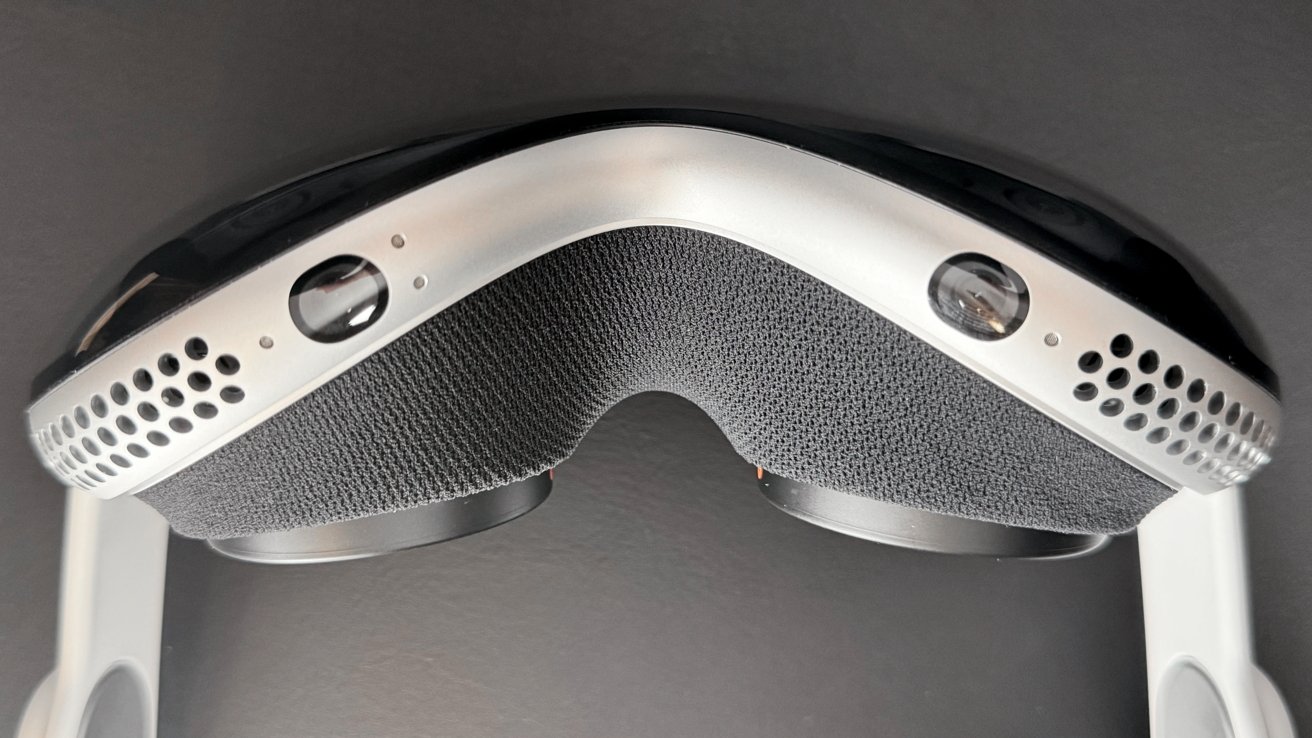
To make things more challenging, Apple Vision Pro has to adjust its eye tracking and software based on paired prescriptions. Some things are just outside of the spectrum that software can cover, at least with the current hardware and visionOS version.
We cannot provide a magical value to tell you if you're ineligible for Apple Vision Pro prescriptions. ZEISS has a tool to insert values to check if a prescription can be filled with the optical inserts.
If one of your values is outside the range, it will be flagged. However, that's not the end of your opportunity to own and use Apple Vision Pro.
Save this information and speak to your optometrist about adjusting values to correct your vision while meeting the requirements. If that isn't possible and soft contacts or LASIK are out of the question, you may have to wait for new hardware or software to try again.
There are accessibility features for Apple Vision Pro that will help with things like monovision, a drooping eyelid, lazy eye, and other conditions. For example, users can make eye tracking rely on only one eye instead of two.
Anyone who experiences blurriness or eye strain while using Apple Vision Pro should speak to their eye care provider for an updated prescription. This applies to users relying on reader lenses, too.
Ordering Apple Vision Pro ZEISS optical inserts
If you've decided to order Apple Vision Pro, it's a straightforward process that can be completed from the Apple Store app or Apple's website. To complete the order, you'll need to know if you need readers or prescription lenses.
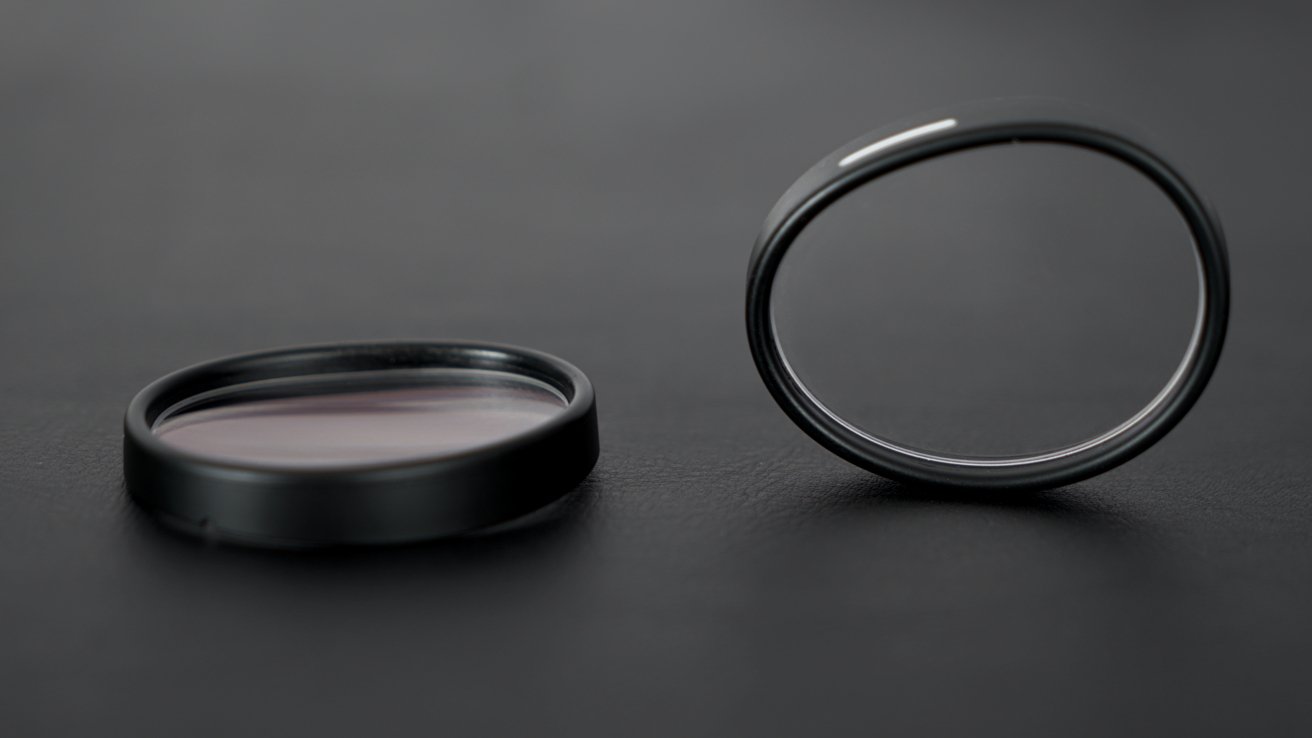
To order reader inserts, Apple will need to know the correction strength. They come in three strengths:
- +0.75 to +1.25D
- +1.50 to +1.75D
- +2.00 to +2.75D
Those that use readers with correction above +2.75D can try inserts within the +2.00 to +2.75 range. Otherwise, they'll need to speak to their eye care provider.
Ordering prescription strength inserts has a few more requirements, but this portion of the order is completed after Apple Vision Pro is ordered online.
You'll need a prescription with:
- Your distance correction needs and/or your near correction needs, indicated separately but on the same prescription sheet. This is known as the full manifest refraction by eye care providers.
- An expiration date (that's not expired).
- Your full name, and your prescriber's license number and signature.
- Your eye exam or issue date.
Contact lens prescriptions aren't accepted. The prescription shouldn't contain intermediate distance, task distance, or computer distance.
ZEISS optical inserts can't be made with prism values.
Reader inserts are $99. Prescription inserts are $149. Apple Vision Pro starts at $3,499.